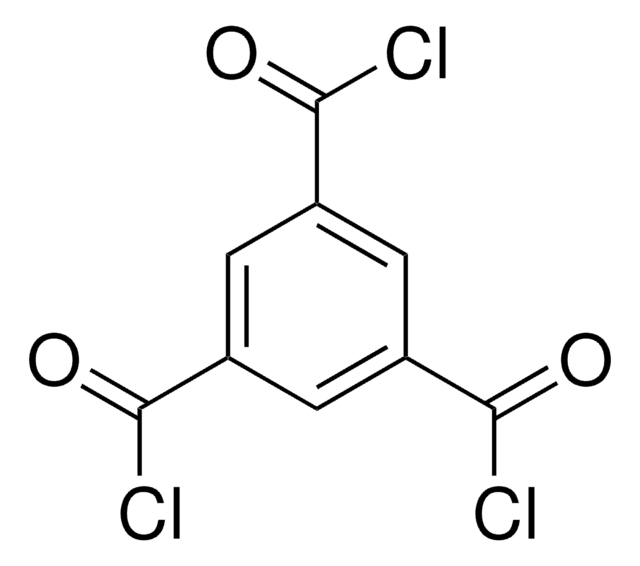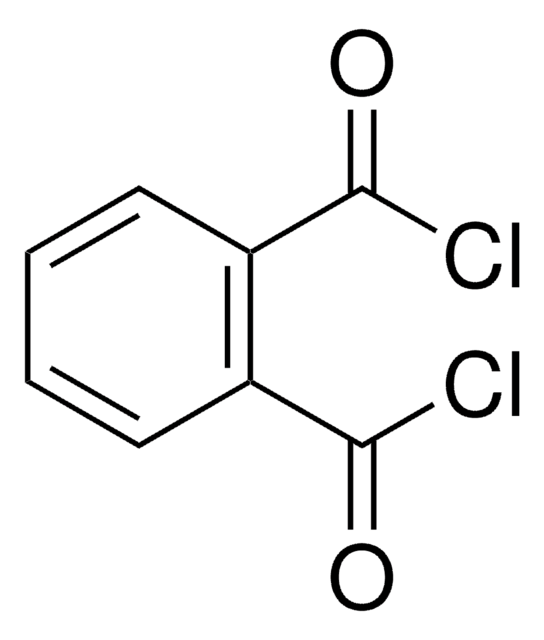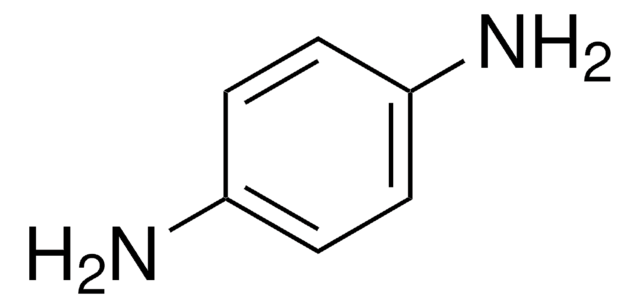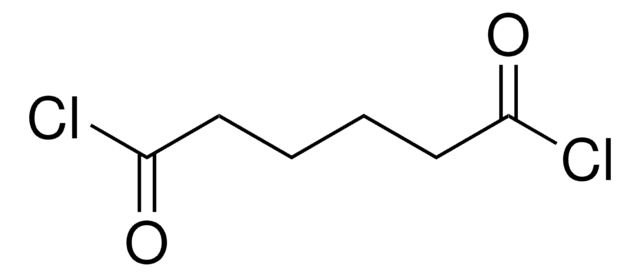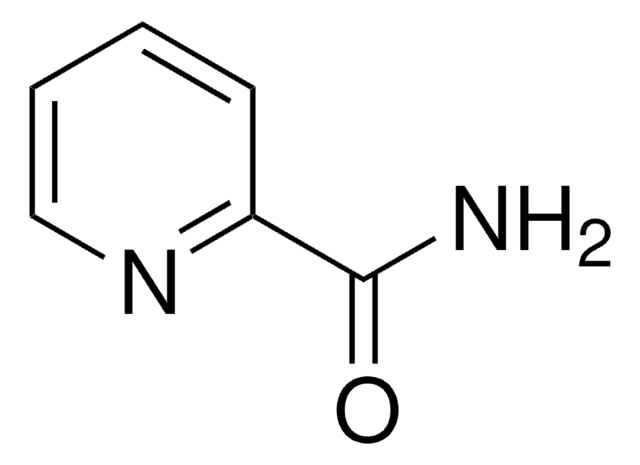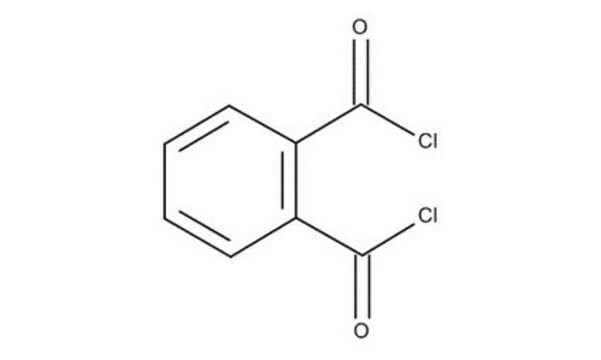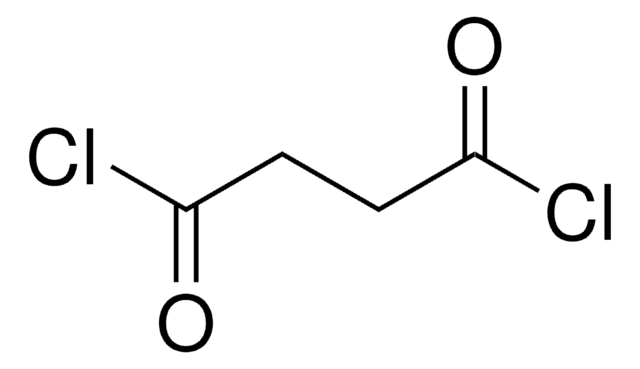120871
Terephthaloyl chloride
≥99%, flakes
Synonyme(s) :
Terephthalic acid chloride, Terephthaloyl dichloride
About This Item
Produits recommandés
Densité de vapeur
7 (vs air)
Niveau de qualité
Pression de vapeur
0.02 mmHg ( 25 °C)
Essai
≥99%
Forme
flakes
pb
266 °C (lit.)
Pf
79-81 °C (lit.)
Solubilité
ethanol: soluble 100 mg/mL, clear, colorless
Groupe fonctionnel
acyl chloride
Chaîne SMILES
ClC(=O)c1ccc(cc1)C(Cl)=O
InChI
1S/C8H4Cl2O2/c9-7(11)5-1-2-6(4-3-5)8(10)12/h1-4H
Clé InChI
LXEJRKJRKIFVNY-UHFFFAOYSA-N
Vous recherchez des produits similaires ? Visite Guide de comparaison des produits
Catégories apparentées
Description générale
Application
Informations légales
Mention d'avertissement
Danger
Mentions de danger
Classification des risques
Acute Tox. 3 Inhalation - Eye Dam. 1 - Skin Corr. 1A - STOT SE 3
Organes cibles
Respiratory system
Code de la classe de stockage
6.1A - Combustible acute toxic Cat. 1 and 2 / very toxic hazardous materials
Classe de danger pour l'eau (WGK)
WGK 1
Point d'éclair (°F)
356.0 °F - closed cup
Point d'éclair (°C)
180 °C - closed cup
Équipement de protection individuelle
Eyeshields, Faceshields, Gloves, type P3 (EN 143) respirator cartridges
Faites votre choix parmi les versions les plus récentes :
Déjà en possession de ce produit ?
Retrouvez la documentation relative aux produits que vous avez récemment achetés dans la Bibliothèque de documents.
Les clients ont également consulté
Articles
Molecular Layer Deposition of Organic and Hybrid Organic-Inorganic Polymers
Notre équipe de scientifiques dispose d'une expérience dans tous les secteurs de la recherche, notamment en sciences de la vie, science des matériaux, synthèse chimique, chromatographie, analyse et dans de nombreux autres domaines..
Contacter notre Service technique
